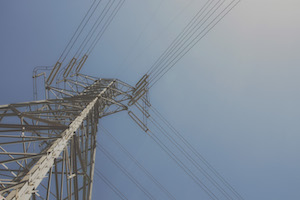India's economy booming
MUMBAI, India — Just how fast can India grow? Ask Manal Farooq, who can't make gloves quickly enough.
"We are facing a major problem," said Farooq, a senior executive at Marvel Gloves Industries, which produces 3 million pairs of gloves a month, most used in industrial production in India. "Despite importing gloves we are not able to meet demand."
The run on gloves began five months ago, said Farooq, whose customers include Ford and Nissan.
It's been driven by a record rebound in manufacturing, spurred in part by government stimulus, which has led India out of the Great Recession faster than many imagined possible.
So abundant is the optimism that India's Finance Ministry, led by Pranab Mukherjee — not a man given to hyperbole — has made a bold assertion: India could soon overtake China's growth rates.
"It is possible for India to move into double-digit growth and even become the fastest growing economy in the world within next four years," the Ministry said as part of an economic survey released in February.
The catch: bridging the chasm between the possible and the probable. Given the growing productivity of Indian workers and large working age population, it's certainly possible for India's economy to speed up, say economists and businesspeople. But in practice, overtaking China would require fundamental changes in the way India does business. Creaking or nonexistent infrastructure and cumbersome government bureaucracy are drags on businesses large and small. And few think the bureaucratic and political hindrances that make it hard to execute even the best-laid plans will be removed anytime soon.
Also in doubt is how much faster growth will benefit the mass of Indians who've seen little or no gain from the country's much lauded economic rise since liberalization began in the early 1990s.
So far, the economic makeover has worsened income inequality in India, and despite five years of near 9 percent growth, more than 450 million people struggle by earning less than $1.25 a day.
But higher levels of business investment in the past decade have raised profits and wages and in turn produced a large pool of corporate and household savings that was unimaginable in India 10 years ago.
"The productive capacity of the economy has gone up," said former International Monetary Fund economist Renu Kohli. "My only caveat is that as far as implementation and execution of projects and policies is, India is a slow mover. It doesn't move at the speed China does."
Financing isn't the problem, nor lack of good ideas, she said.
"The constraint lies in procedural issues, land acquisition and the capacity of even private participants to execute those projects without delays," she said. "For that to change, it's not entirely clear what a budget or change in policies can bring about."
India's top spending priorities in its new budget, released Feb. 26, are social programs and infrastructure. Next fiscal year, the government plans to spend $30 billion on social programs and $37.9 billion on infrastructure.
The mix reflects the ruling Congress party's general approach — ramp up economic growth with pro-market policies and then redistribute the spoils through a massive hodgepodge of social spending, subsidies and employment guarantee programs.













